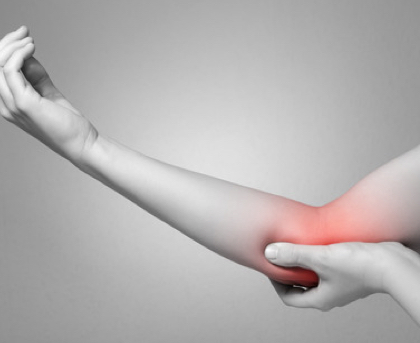Signs and Symptoms
The elbow is a hinge joint where 3 bones come together to allow bending or straightening of the joint. It has strong ligaments to keep the bones in position and muscles and tendons allow for movement. Injury to any of this ‘soft tissue’ can cause pain.
Dislocation
The elbow can dislocate where one or more of the bones are forced out of position, usually by falling or in contact sports. This requires a visit to the hospital, where the bone is relocated.
Arthritis
Arthritis can occur where the bony ends of the joint wear out with the ageing process or with long-term overuse. Symptoms include pain and restriction of movement.
Fracture
It is possible to fracture (or break) the bones of the elbow joint. This can happen with a sudden blow in a contact sport or a fall onto the elbow. This requires a hospital visit and an X-ray will confirm if a fracture is present. A stress fracture is a small crack in one of the bones of the elbow joint. They are common in athletes where throwing is involved e.g. javelin, volleyball and racquet sports.
Bursitis
Bursitis is a condition characterised by an inflammation of small fluid-filled sacs located between tendons and bones. These bursae provide cushioning and protection to the area as excessive movement and friction can irritate and swelling and pain result.
Tennis Elbow and Golfer’s Elbow
This is where pain and swelling occur in the tendon on the outside of the elbow (Tennis Elbow) or on the inside of the elbow (Golfer’s Elbow). It is usually as a result of overuse, either in sports or working environments e.g. repetitive lifting, throwing or typing. This condition can become chronic and if untreated muscle wasting occurs leading to weakness and loss of function of the elbow.
Our Treatment & Expertise
It is important to have a full assessment of the elbow and the upper limb. At Bray Physiotherapy we are experts at diagnosing the cause of your pain. Following accurate diagnosis, our treatment is aimed at promoting healing and reducing pain. Our ‘Hands-On’ approach may include massage, manual therapy, electrotherapy and/or acupuncture. A personalised exercise programme will ensure full range of movement is restored and strength is achieved so a confident return to sport or function can occur.


